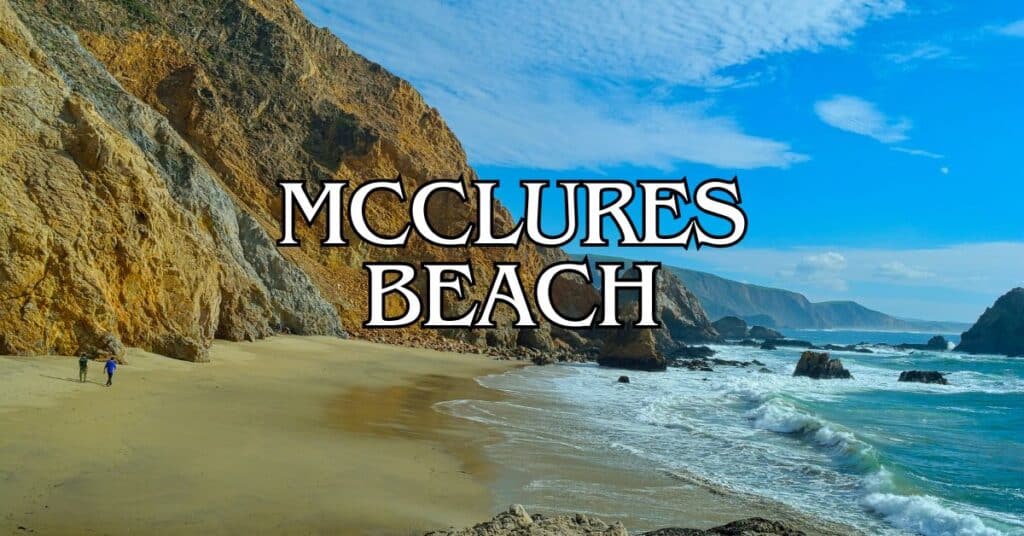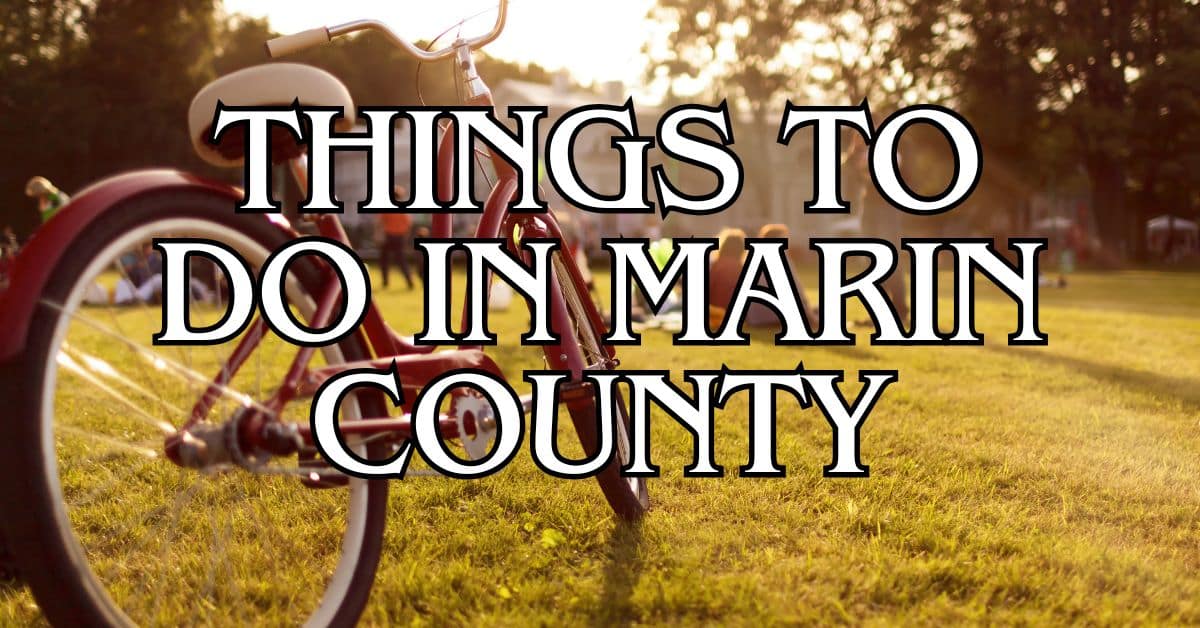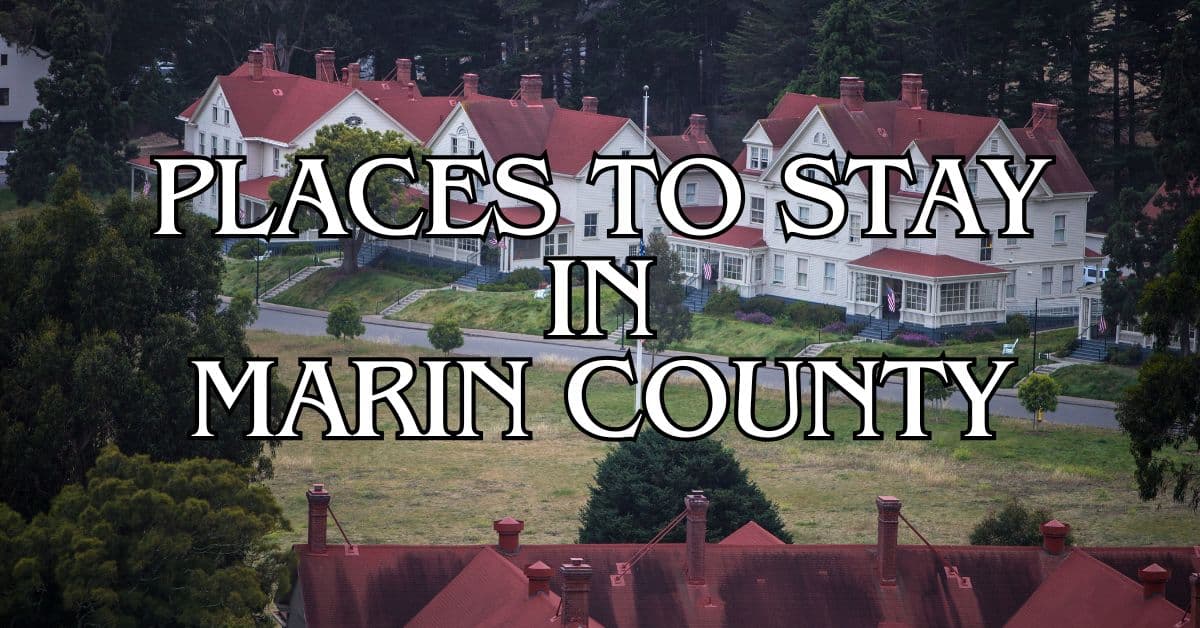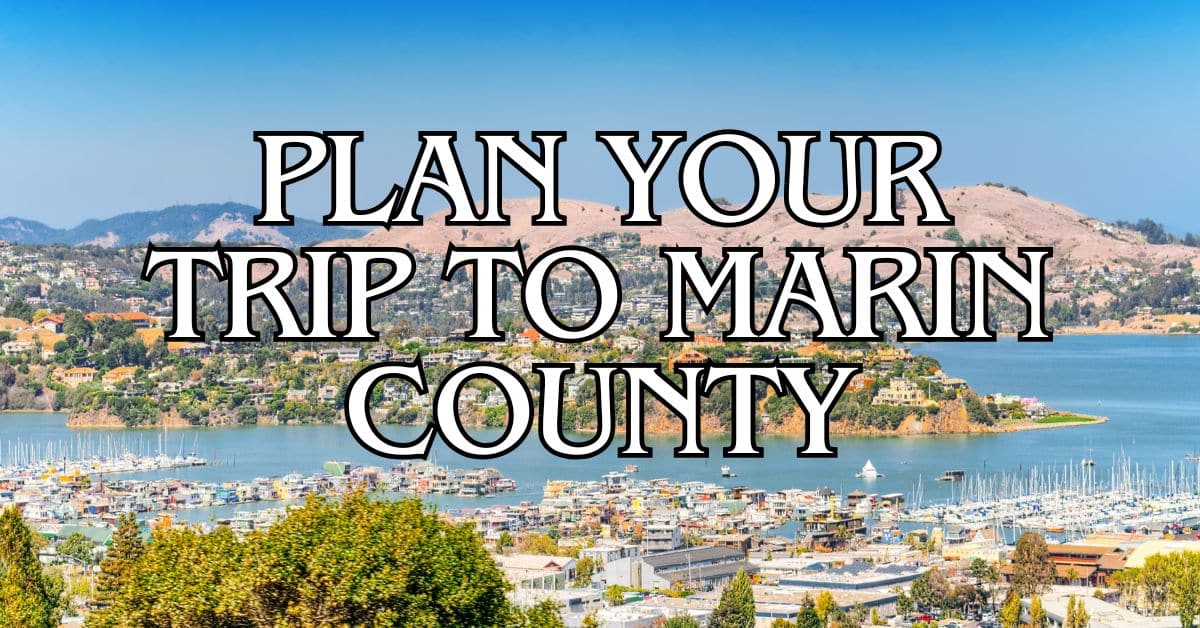Tucked away on the wild edge of Point Reyes National Seashore, McClures Beach feels like a secret. This cove greets you with soft sand, booming surf, and some of the oldest rock formations around the Bay Area. McClures Beach is easily one of Marin County’s most stunning spots—raw, remote, and just far enough off the beaten path.
Getting down to the sand is half the fun. The trail winds through a crazy mix of rocks and coastal scrub, and suddenly you’re staring at the Pacific framed by cliffs. Some folks tag on a hike from Tomales Point, then cool off here at the end.
Discover hand-picked hotels and vacation homes tailored for every traveler. Skip booking fees and secure your dream stay today with real-time availability!
Browse Accommodations Now
It’s not your typical beach day, honestly. Besides wandering the sand, you can poke around tide pools, hunt for a hidden “secret beach” at the far end, or just watch the waves pound the shore. If you pack a lunch, you’ll want to stick around for those views—they’re something else, and the trip up here is worth every minute.
Overview of McClures Beach
McClures Beach sits inside Point Reyes National Seashore, offering up untamed beauty and a true taste of Northern California’s coast. Dramatic cliffs, wild surf, and a landscape that feels mostly untouched set it apart from Marin’s more crowded beaches.
Location and Setting
You’ll find McClures Beach at the very northwestern tip of Point Reyes in Marin County, California. Just drive all the way to the end of Pierce Point Road—there’s a parking lot with some basic facilities.
The trail to the beach drops down a ravine for about half a mile. It’s a bit steep, but that keeps the crowds away.
Honestly, the isolation is a big part of the charm. It’s quiet out here, far from the usual tourist stops. The beach faces straight into the Pacific, so it’s got that restless, wild vibe you don’t get on more sheltered shores.
Natural Features
The beach itself is a sandy cove hugged by tall, rocky cliffs. Waves crash hard against the shore—beautiful to watch, not so great for swimming.
You’ll notice the geology right away: rugged bluffs shield you from the wind in some spots. Down at the south end, there’s a little cove that’s a bit more protected, but the ocean here is always unpredictable.
Views are spectacular, no matter the season. At low tide, you might stumble across tide pools full of bright marine life.
Wildlife is everywhere. Shorebirds dart along the sand, and sometimes you’ll spot harbor seals offshore. If you’re hiking Tomales Point, this beach is a solid place to end up.
How to Get to McClures Beach
McClures Beach is way up at the north end of Point Reyes National Seashore. The drive out here from Bear Valley takes about 35 minutes, mostly along scenic Pierce Point Road.
Driving Directions
From San Francisco or the East Bay, head north on Highway 101 and take Sir Francis Drake Boulevard into Marin. Keep following Sir Francis Drake through the small towns until you hit Point Reyes National Seashore. After Inverness, hang a right onto Pierce Point Road and just keep going until the road stops.
It’s a winding, gorgeous drive through farmland and open hills. Figure on 30 minutes from Point Reyes Station to the trailhead. If you’re coming from San Francisco, plan for 1.5 to 2 hours, depending on traffic (which can be a wild card).
Parking Information
There’s a small parking lot at the end of Pierce Point Road—maybe room for 25 cars if everyone parks well. On summer weekends or holidays, it fills up fast, so if you don’t want to get shut out, show up early.
Parking’s free, but there aren’t any real facilities here. Bring what you need before you leave Point Reyes Station or Inverness.
From the lot, it’s a moderately steep 0.4-mile hike (about 600 meters) down to the beach, following a path next to a creek.
Access and Safety Information
McClures Beach is gorgeous, but it’s remote and the ocean can be rough. If you’re planning a trip, take a minute to think through the logistics and the risks. This isn’t a spot for careless beach days.
Beach Access Points
The main (and only) trail starts at the parking lot. It’s about 0.4 miles and drops pretty quickly. Most folks make it down in 10-15 minutes.
The trail’s not wheelchair accessible, and the dirt can get slick after rain. Wear shoes with good grip.
Parking is tight—maybe 30 spots, tops. On busy days, it’s full by 10 AM.
There’s no other way down. The cliffs around the beach are too steep for safe access anywhere else.
Tide and Wave Safety
Sneaker waves are a real danger here. They come out of nowhere and can drag you into the ocean. Don’t turn your back on the water, ever.
Rip currents are common. If you get caught, swim parallel to the shore until you’re out of the current, then head in.
The ocean’s freezing—usually under 50°F (10°C). Even in summer, hypothermia’s a risk if you stay in too long. Watch out for shivering, confusion, or clumsiness.
Check tide tables before you go. At high tide, parts of the beach disappear and you could get trapped against the cliffs.
Seasonal Considerations
Winter (November-February) brings big storms and crazy waves. Sometimes the beach isn’t even safe or accessible. The trail can turn into a mudslide after heavy rain.
Spring (March-May) sometimes brings wildflowers, but the weather’s still iffy and the water stays cold.
Summer (June-August) is calmer, but don’t be surprised if you hit thick fog, especially in the mornings. Even on sunny days, it rarely gets warmer than 65°F. Bring layers.
Fall (September-October) usually has the best weather—clearer skies, milder temps. Still, storms can blow in out of nowhere, so check the forecast before you head out.
Activities at McClures Beach
If you love wild places and don’t mind a hike, McClures Beach is a dream. It’s quiet, scenic, and there’s plenty to do if you’re up for a little adventure.
Hiking Trails Near the Beach
The main trail down is about 0.8 miles round trip, and it’s a bit of a workout on the way back up. It starts at the parking lot and drops through coastal brush to the sandy shore.
If you want more, you can hop onto the Coastal Trail from McClures. That hike gives you sweeping views of the Pacific and the cliffs. The path changes from sand to rock, so sturdy shoes are a must.
Find the perfect hotel or vacation rental. Instant booking, no fees!
View Top Stays
Nearby, Tomales Point Trail (3.4 miles one way) is famous for its views—and if you’re lucky, you might spot tule elk. Springtime is especially nice when wildflowers are everywhere.
Always check the tide schedule before hiking near the beach. Some areas get cut off when the tide’s high.
Wildlife Viewing Opportunities
McClures Beach is a hotspot for wildlife. Bring binoculars if you have them—you might see harbor seals on the rocks or gray whales cruising by in winter and early spring.
Birders will love it here. Brown pelicans, cormorants, and all sorts of shorebirds hang out in the area. Mornings are best for spotting animals before things get busy.
Deer often show up near the parking lot, especially at dawn or dusk. Just give them space.
At low tide, the north end has tidepools packed with sea stars, anemones, and little crabs. It’s easy to lose track of time poking around the rocks.
Please keep your distance from wildlife and don’t mess with their routines. The less you disturb them, the better.
Picnicking and Relaxation
No picnic tables here, but honestly, the whole beach is a picnic spot if you bring a blanket. It’s easy to find a quiet patch of sand with a view.
You’ll have to carry everything down and back up the trail, so pack light. There’s no water or trash cans, so bring your own and pack everything out.
If you’d rather have a table and restrooms, Heart’s Desire Beach at Tomales Bay is nearby and more developed—good backup if McClures is too windy.
Some folks come here just to relax—beachcombing, meditating, taking photos. The scenery is incredible, especially around sunset.
Nearby Points of Interest
There’s a lot to explore near McClures Beach, and it’s worth building in some extra time to check out a few of these spots.
Point Reyes National Seashore Highlights
Point Reyes National Seashore covers 71,000 acres of wild coastline and open space. The Bear Valley Visitor Center is a handy place to grab maps and ask about trails or wildlife.
The Point Reyes Lighthouse sits on a rocky bluff and is a classic whale-watching spot during migration (January-April, October-November). You’ll have to tackle 308 steps to get there, but the view is worth it.
Tule Elk Reserve at Tomales Point offers a 9.7-mile round-trip hike where you can see elk up close, especially during rutting season (August-October).
Chimney Rock bursts with wildflowers in spring and has elephant seal viewing platforms in winter (December-March).
Other Beaches in Marin County
Limantour Beach stretches for miles and has gentler surf—better for families and birdwatchers, with hundreds of species spotted here.
Kehoe Beach is dog-friendly (on leash), with dramatic cliffs and dunes. The short trail in passes through wetlands, so keep an eye out for wildlife.
Drakes Beach is famous for its golden cliffs—some say it looks a bit like England’s White Cliffs of Dover. It’s more sheltered, so usually less windy.
Point Reyes Beach (or Great Beach) runs for 11 miles along the peninsula’s west side. The north end has strong currents, while the south is a little calmer.
Stinson Beach, down south, has lifeguards in summer and plenty of places to eat or shop nearby.
Wildlife and Natural Habitat
McClures Beach is a haven for both land and sea creatures. The remote setting means you’re likely to catch glimpses of animals just doing their thing, all year long.
Common Wildlife Species
McClures Beach and its surroundings are a haven for wildlife. Deer frequently graze in the coastal scrub near the parking lot, especially at dawn and dusk. If you’re lucky, you might catch a glimpse of a gray fox or a raccoon, though they tend to keep to themselves and are mostly active during those quiet hours.
Harbor seals sometimes lounge on offshore rocks or bob in the waves. At low tide, tide pools reveal a miniature world—sea stars, anemones, little crabs—all tucked among the rocks.
Birdwatchers, bring your binoculars. Shorebirds and seabirds are everywhere here. Keep an eye out for the threatened snowy plover on the sandy stretches. These tiny birds nest right on the beach, so it’s best to give them space.
Long before any of us showed up, the Coast Miwok people lived here, relying on the ocean’s bounty for thousands of years.
Seasonal Wildlife Events
From December through May, gray whales migrate along the coast. If you’ve got binoculars, they’ll come in handy—scan the horizon from the beach or nearby bluffs and you might spot these giants moving between Alaska and Mexico. January and February are usually the best months for sightings.
Spring means wildflowers on the bluffs and a burst of bird activity as nesting season gets underway. Shorebirds start building nests and raising chicks right on the sand.
When summer fog rolls in, the beach takes on a different mood. Harbor seal pups often appear during these months.
Come fall, migratory birds return along the Pacific Flyway. Pelicans, cormorants, ducks—you’ll notice more of them in September and October.
Beach Etiquette and Conservation
McClures Beach feels remote, and that’s part of its charm. It also means we all have a responsibility to keep it pristine. Etiquette and conservation matter here more than ever.
Leave No Trace Principles
There’s a vault toilet at the trailhead—use it before hitting the sand, because there’s nothing once you’re out there.
Take everything you bring with you when you leave. Bring a small bag for your own trash, and maybe pick up any stray litter you see. Even food scraps like apple cores should go home with you.
Luxury stays to cozy cottages await, all with instant booking. Find the best deals!
Browse Marin Stays
Stick to the established trails. The cliffs and the plants clinging to them are fragile and don’t handle trampling well.
Try not to move rocks or mess with natural features. Even small changes can mess up habitats for the tiny creatures living there.
Don’t build fires. The wind is unpredictable, and driftwood isn’t just wood—it’s shelter for all sorts of beach life.
Preserving Wildlife and Plant Life
Give wildlife plenty of space. Binoculars let you get a closer look without stressing the animals. Don’t feed them; it throws off their routines.
For the snowy plovers, stay at least 50 feet away. They’re small and nest right on the sand, so it’s easy to disturb them without realizing.
At low tide, tidepooling is tempting. Look, but don’t touch. Step lightly—there are delicate creatures everywhere.
If you spot harbor seals or other marine mammals resting on the beach, keep back at least 100 feet.
The native plants along the trail help hold the bluffs together. Stay on the marked paths to protect them.
Camping and Overnight Stays
Camping isn’t allowed on McClures Beach, but there are plenty of options nearby in Point Reyes National Seashore.
Nearby Campgrounds
Point Reyes has four hike-in campgrounds that make great bases for exploring. Coast Camp is 1.8 miles from the trailhead and has 12 sites with water and toilets. Sky Camp sits up on a ridge with 11 sites and sweeping views of the Pacific. Wildcat Camp is 5.6 miles from the parking lot, with 8 sites close to a gorgeous stretch of beach.
You’ll need to reserve sites through recreation.gov, up to six months ahead. It’s $20 a night, plus a $10 reservation fee.
The Golden Gate National Recreation Area, just north of the bridge, has two walk-in campgrounds: Bootjack (15 sites) and Pantoll (16 sites). They’re quieter and closer to San Francisco.
Backpacking Options
If you’re feeling adventurous, backpacking to McClures Beach is a memorable way to experience the area. The Tomales Point Trail offers plenty of wildlife and big views. Pack light—the trail can get tough, especially if it’s foggy or windy.
Overnight parking isn’t allowed at McClures Beach, so you’ll need to plan your transport. For longer trips, the 16-mile Coast Trail links several beaches and campgrounds.
Mount Tamalpais State Park also has backpacking options, but you’ll need a permit. The Steep Ravine Trail connects to the coast if you’re up for a challenge.
Bring extra layers—coastal nights get chilly, even in summer.
Outdoor Recreation in the Area
McClures Beach isn’t just about the views. There’s a lot to do in the area if you’re up for a bit of adventure, or just want to soak in the scenery in different ways.
Fishing and Beachcombing
Fishing here can be rewarding, though the surf is no joke. Locals often bring surf casting gear to try for perch, rockfish, or maybe a striped bass. Always check current regulations—rules change by season and spot.
After winter storms, beachcombing is a treat. You might find shells, driftwood, or even the occasional glass float. Early mornings give you the best shot at treasures before the crowds arrive.
Important Safety Note: Watch the tides. The rising water can cut off access, especially at the north end.
Biking and Horseback Riding
You can’t bike or ride horses on McClures Beach itself, but the greater Point Reyes area has some fantastic options for both.
Biking Routes:
- Bear Valley Trail (easy, family-friendly)
- Bolinas Ridge Trail (more challenging, great views)
- Sir Francis Drake Boulevard (paved, usually quiet)
Don’t have a bike? Rentals are available in Point Reyes Station.
For horseback riding, local stables like Five Brooks offer guided tours through forests and meadows, some with ocean views. Certain trails even lead to beaches where horses are allowed.
Both activities let you see more of the landscape than you’d cover on foot.
Kayaking and Water Activities
Tomales Bay is just a short drive away and perfect for kayaking, paddleboarding, or other water sports. The water’s usually calm, so it’s great for beginners or families.
Several outfitters—Blue Waters Kayaking and Point Reyes Outdoors, for example—rent gear and run guided tours.
Best Kayaking Spots:
- Drakes Estero (you’ll need a permit)
- Tomales Bay State Park beaches
- Marshall Beach launch
If you’re around in summer, night kayaking tours are a must. The water glows blue with bioluminescence when your paddle stirs it up—pretty magical.
Check the weather before heading out, and dress for cool water, even on warm days.
Tidepooling at Low Tide
McClures Beach is a favorite for tidepooling. When the tide drops, the rocks come alive with all sorts of marine creatures.
Check tide charts ahead of time—the best conditions are during negative low tides (0.5 feet or lower). That’s when you’ll see the most life.
What You Might Find:
- Giant sea anemones (sometimes bright green or purple)
- Ochre sea stars—lots of colors
- Hermit crabs darting around
- Colorful nudibranchs (sea slugs)
- Small fish in the deeper pools
A field guide helps if you want to ID what you’re seeing, but don’t collect anything—this is protected land. Wear shoes with good grip; the rocks can be slick.
Step gently. If you flip over a rock, put it back how you found it.
Historical and Cultural Significance
McClures Beach sits in a landscape packed with history—layers of it, really. The land carries the stories of indigenous peoples and European explorers who followed.
Coast Miwok Heritage
The Coast Miwok lived here for thousands of years before Europeans arrived. They gathered shellfish, fished, and foraged along the shore and inland. Their sustainable ways let them thrive in balance with the land and sea.
They set up settlements near protected coves, using the beach mainly for gathering food since the weather could be harsh.
You might come across shell middens—ancient piles of shells and debris—hidden in protected spots. Most archaeological sites stay unmarked to keep them safe.
The National Park Service now works with Coast Miwok descendants to honor their ongoing connection to these lands.
Legacy of Sir Francis Drake
Back in 1579, Sir Francis Drake probably landed somewhere along the Point Reyes peninsula. Most historians think he anchored in what’s now Drakes Estero, near McClures Beach.
Drake claimed the area for England, calling it “Nova Albion” (New England). His landing was the first recorded European contact with this stretch of coast.
Historians still argue about the exact spot where Drake came ashore. Someone found a brass plate in 1936 that was supposed to be from Drake, but it turned out to be a fake.
When you visit McClures Beach, you might be walking the same sand that Drake’s crew used while they fixed up the Golden Hinde during their trip around the world.
Drakes Beach, just south of McClures, has these striking white cliffs—some folks think Drake mentioned them in his journals. Who really knows? But it’s fun to imagine.
Find available hotels and vacation homes instantly. No fees, best rates guaranteed!
Check Availability Now






